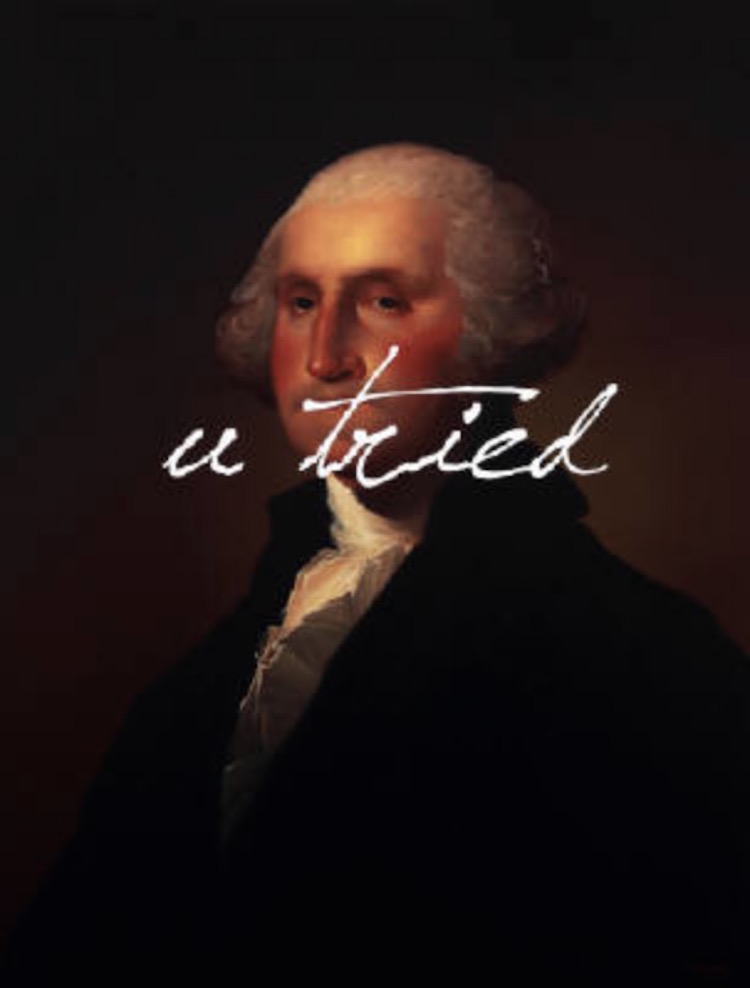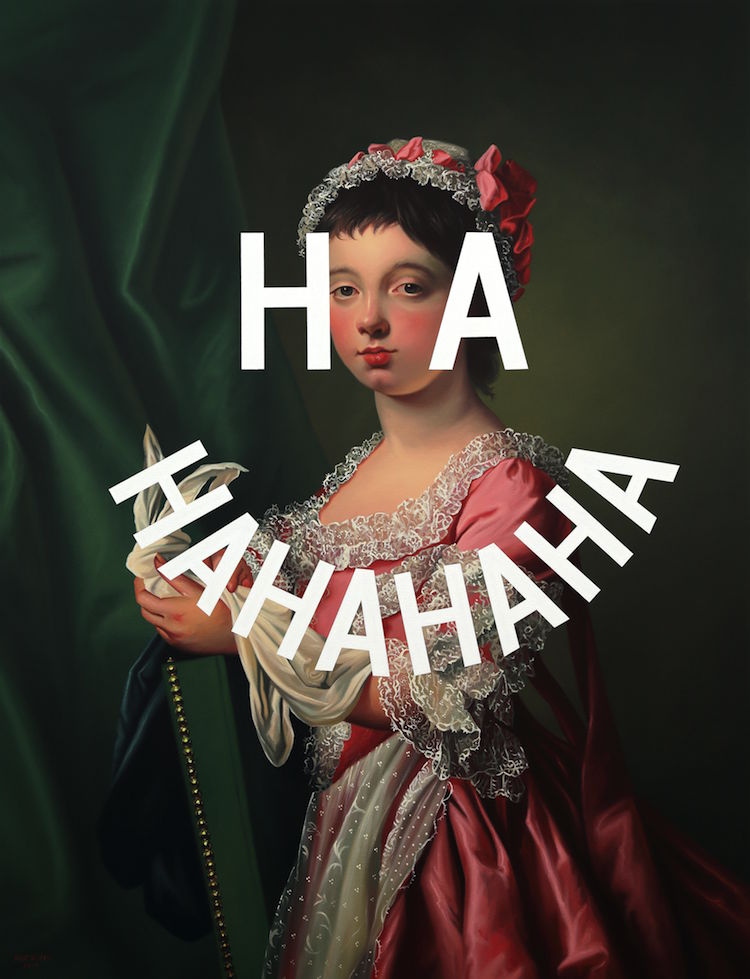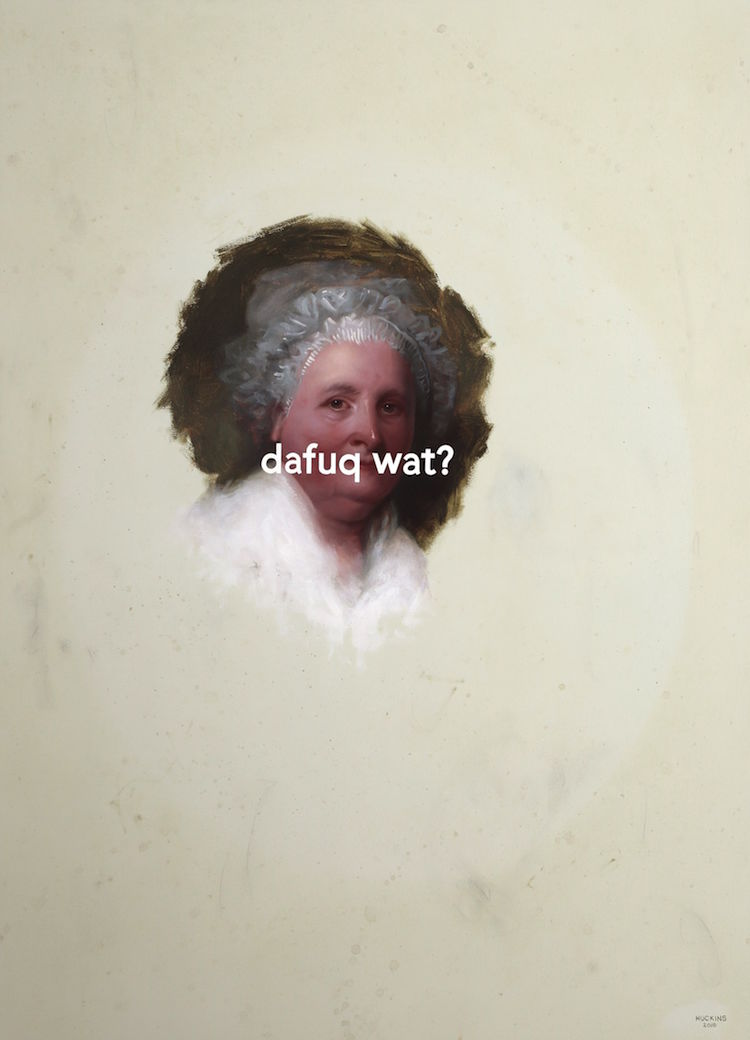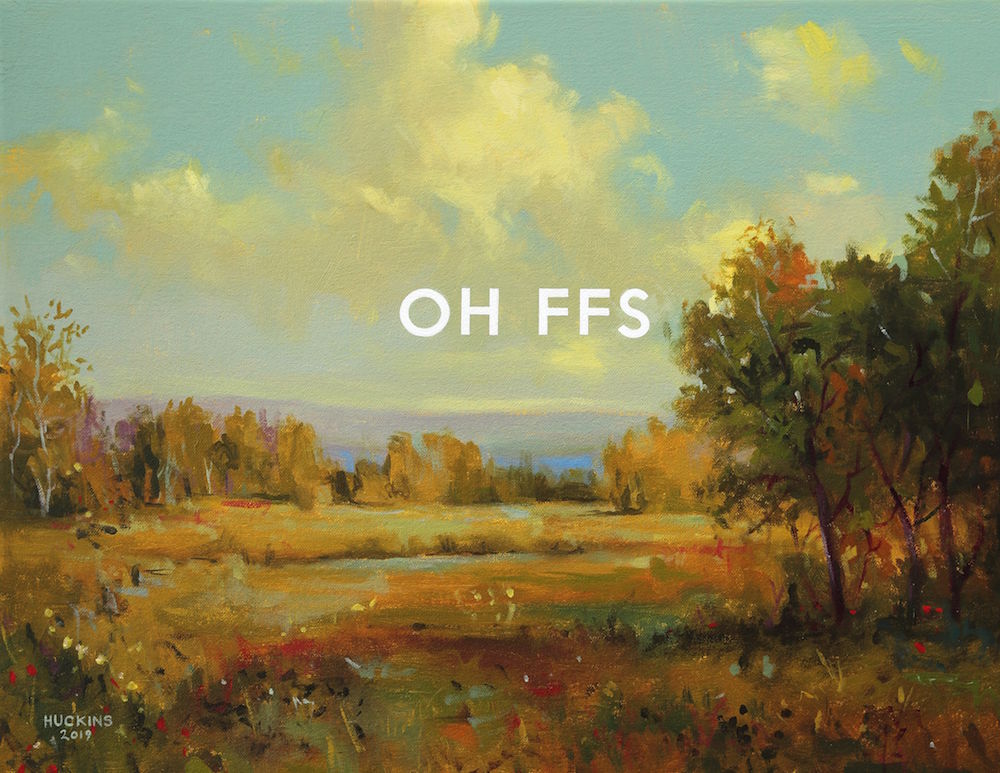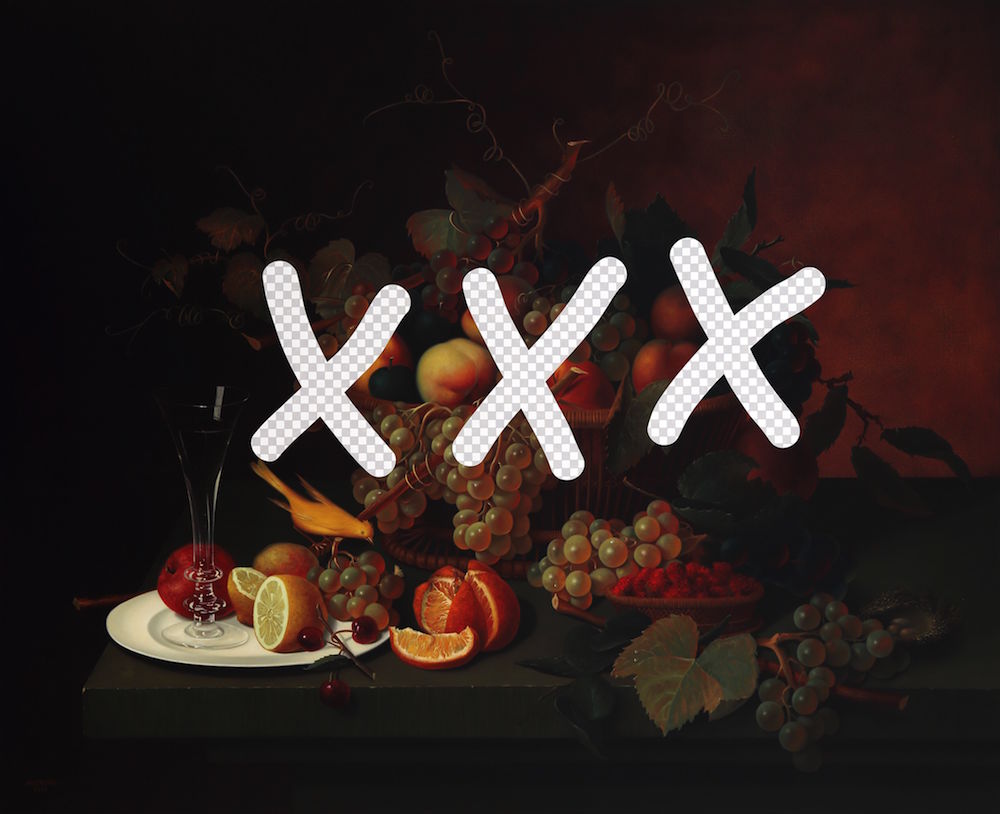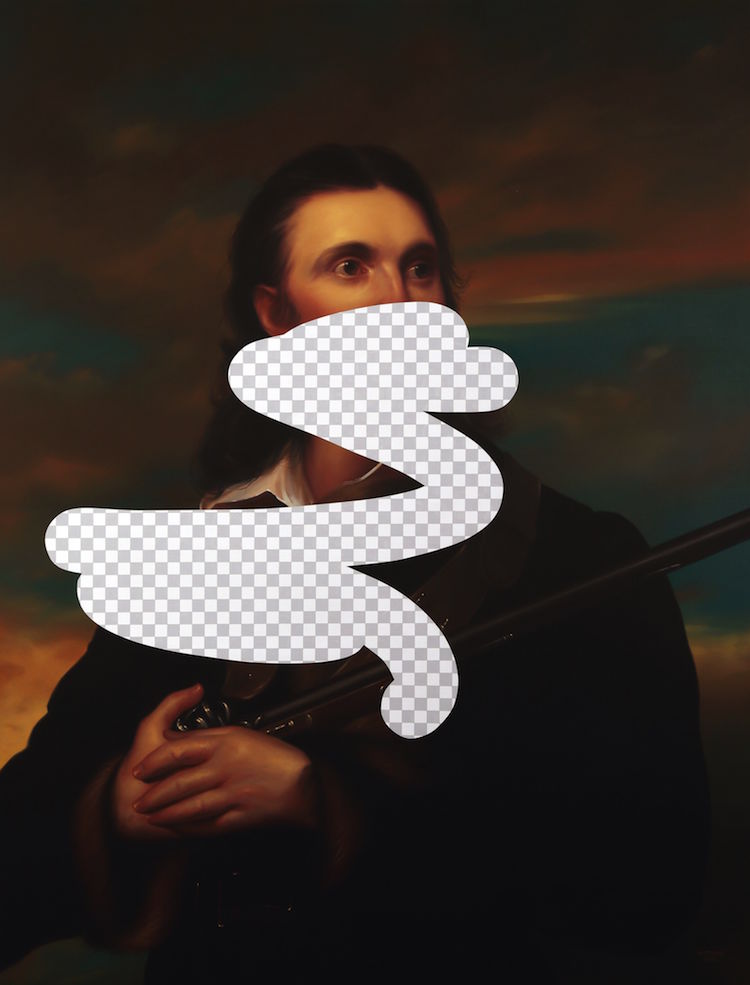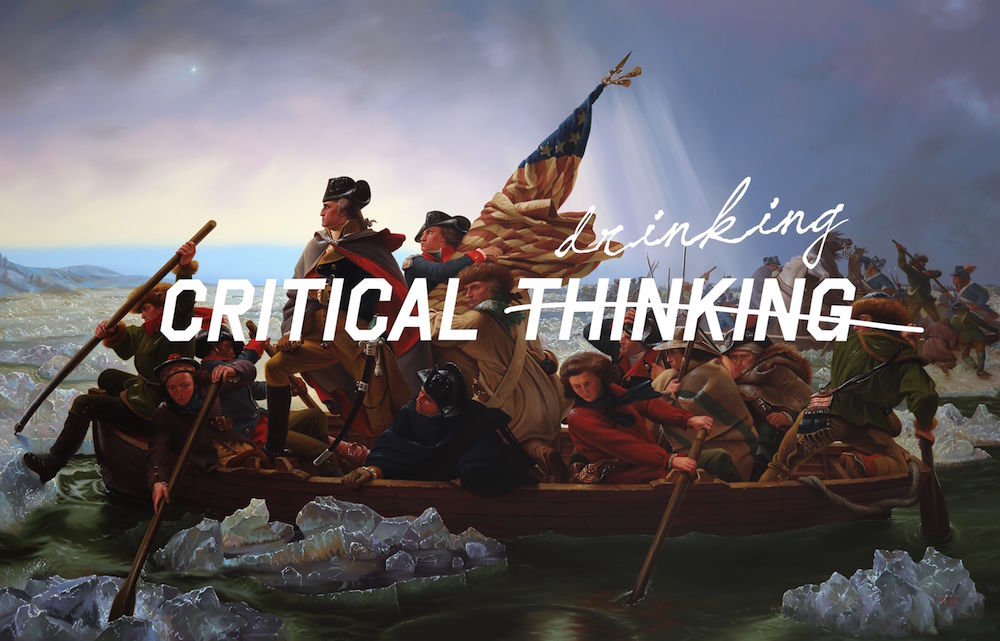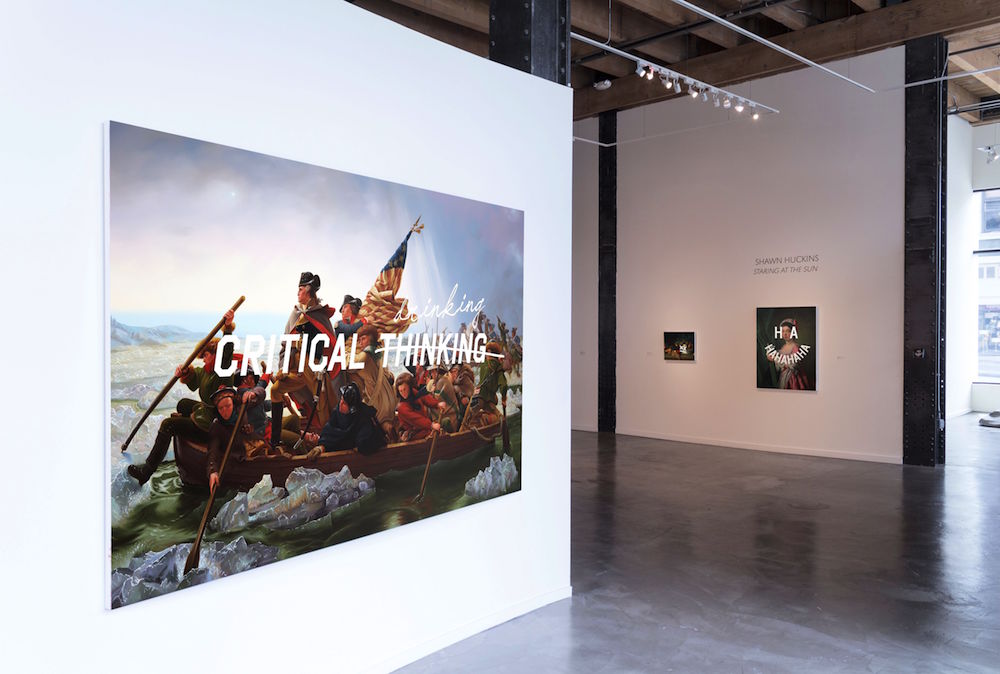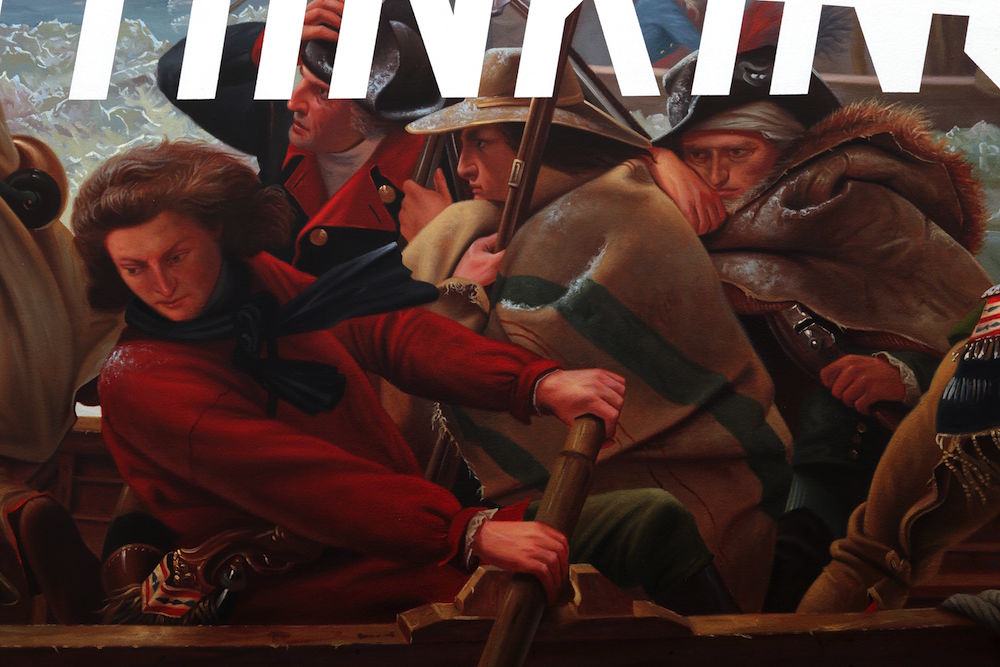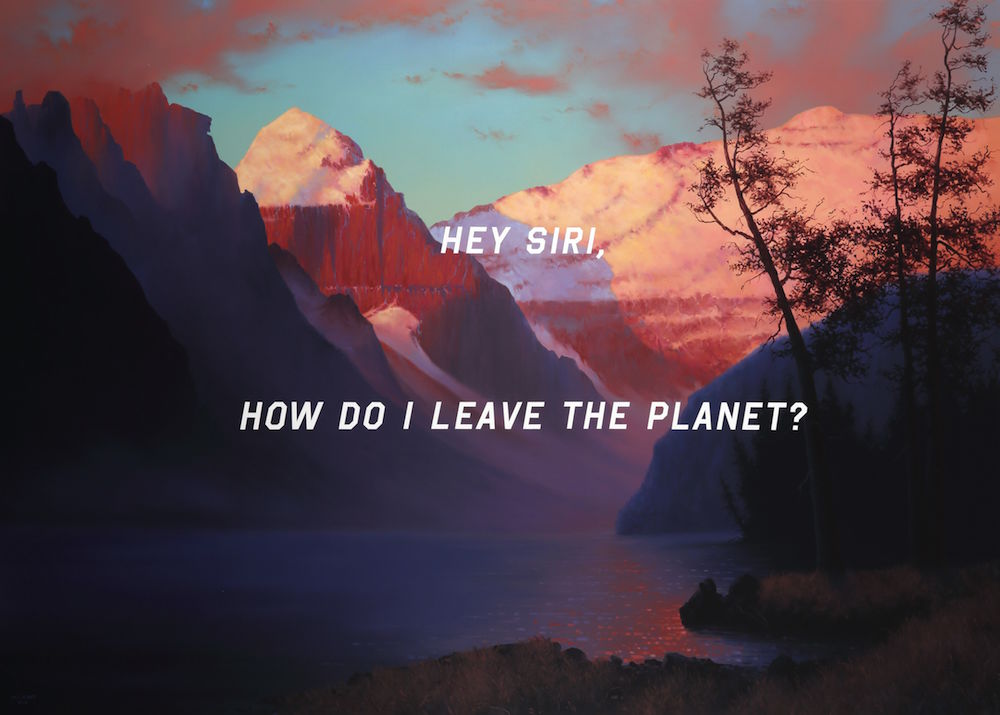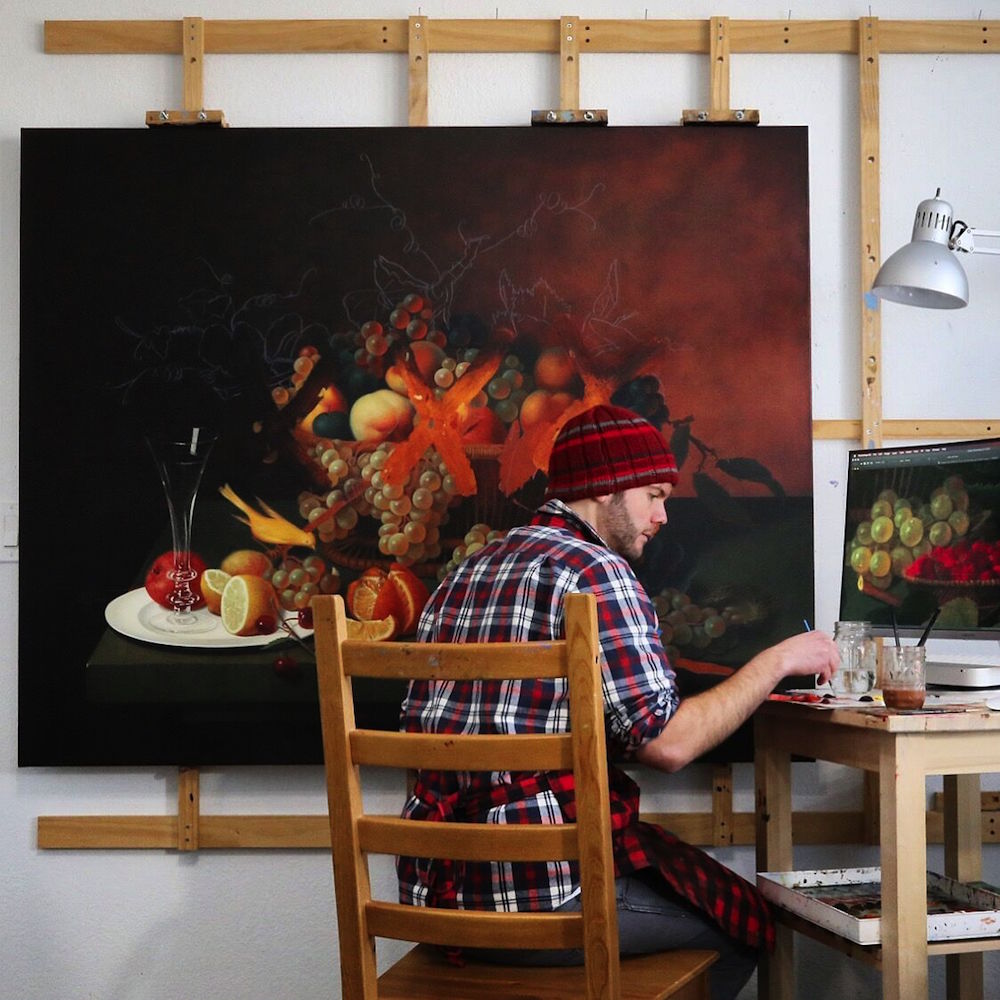On June 6th, Shawn Huckins's newest body of work and solo exhibition, Staring at the Sun, will debut at Seattle's Foster/White Gallery for their second show together. The exposition includes his latest exploration of the present through the lens of history, where an existing image of a classical masterpiece appears adjacent to an abbreviation excerpted from a social media post, text message, or other form of modern-day communication. Such a clash of traditions creates an intriguing opportunity to pose questions about the relationship of the works and the reason two such opposing elements were put together.
Curious about his latest body of work and its relationship to the last three years in US politics, we decided to get in touch with Huckins to talk about his latest show:

Sasha Bogojev: Is there a general subject unifying across the works in Staring at the Sun?
Shawn Huckins: There is an underlying political theme. Typically, my work tends to be apolitical, but ever since the 2016 election, I have been more engaged with being better informed and conscious of what's going on in the country. The paintings in Staring At The Sun are split into two groups: some are superimposed with text and some are superimposed with gestural, graffiti-like 'erasure' marks. The phrases used in the text paintings are sourced from completely random people on social media (aka, trolls) and clearly support one side of the political spectrum. I didn't want to make the text overly obvious as to which demographic they identify, left or right, so I chose more nuanced phrases to let the viewer decide which side they believe it to be.
The Erasure paintings within the show are identified by a gray and white checkered pattern and are characteristic of the erasure tool found in photo editing software. When an image is altered or erased, this underlying pattern is revealed. The paintings with the erasure marks are works strictly from The White House Art Collection and symbolize the government's erasure of our democracy, something that seems to be eroding with corruption and scandals arising almost daily. This series is my response to the government's toxic and divisive erasing of past administration's genuinely good, common sense policies (ie, Paris Climate Accord, a woman's right to choose, transgender service members in military, etc.).

And where did the title of the show originate?
Staring At The Sun is a metaphor for how people can follow someone so blindly, on both sides of the political spectrum, that they fail to see common ground. This failure is why I believe this country is in dangerous territory. It could take years, maybe even decades, to fix the current wave of political divisiveness.
How do you select the paintings you'll be working with?
With the Erasure works, the paintings are held within The White House Art Collection, so that narrows down the search quite a bit. For everything else, I choose paintings that I personally have a visual connection with. It's also based on style as well. I like to work more representational, so I tend to gravitate towards those paintings and avoid more gestural, abstract works.
Do you paint the replica of the original yourself?
Yes, I meticulously replicate each painting myself. The paintings I replicate are all within public domain and museum websites will usually have high-resolution downloads for a person to use at their discretion. If not, a nice email to the curator asking for the high-res image of a certain work will yield good results. I also hand-paint the text phrases, as well as the white and gray checkered pattern for the erasure paintings. Nothing is computer generated and the entire artwork is a tangible painting.

How do you relate the text to the painting?
Selecting which text phrase to use with a certain painting isn't exactly rocket science. It's a bit difficult to explain, but I marry text with a certain image when it feels 'right.' I will take into consideration if the portrait is male or female, and what sort of expression or stance they are in. When I paint landscapes, the text is typically neutral or dealing with an environmental issue.
Is there any particular reason you use a particular typeface?
The angular font in most of the text paintings (called Octin College) is quite simply easy to mask off. When I start a painting, I begin with a blank, white canvas. This is followed by the drawing of the portrait and drafting of the text, which I mask off with tape. Then I begin the underpainting process followed by subsequent layers of paint until finalization. Once the painting is complete, I remove the tape to reveal the white text phrase. So, it's a combination of the most efficient method and laziness that I choose a particular font. I am, however, experimenting with new font styles and figuring out how to streamline the process. Fonts with curves, like the majority of fonts, take more time to ensure accuracy. I wouldn't be able to focus on a painting if my eye keeps going to an out of proportion 's' or 'o,' for example.

What is the story behind the 'XXX' painting and how does that relate to the still life image behind?
This painting is called Smut Still Life With Fruit And Canary (Nature's Bounty, White House Art Collection Erasure No. 28) and is from the Erasure series. I wanted to show that everything in The White House, even an innocent still life, can be turned into a smutty, perversive object since the administration has been so involved with cover-up after cover-up (ie, Stormy Daniels). The triple X symbolizing sex and greed dominates the honest still life painting. Actually, I got the idea of doing the triple X because I thought the grapes looked like little breasts with nipples as the highlights.
Do some people see your work simply as highbrow memes?
The fundamental core of my work has always been sarcastic humor, as that reflects my personality. Usually, it's the older generations that are turned off as they believe I'm defacing these beautiful paintings and dishonoring the memory of whomever the individual may be. I see it more as a commentary on our own society and what they might be saying if they could use text lingo and emojis to describe our current society. For example, the painting George Washington: You Tried is a stab at our current political climate, thinking about how we tried, but should really start over because it only seems to be getting worse. Not what George had in mind, I'm sure.
Is it important to have the viewer understand the background of the work?
In general, I think art should be for everyone, so whether you're highly educated or not, you should be able to enjoy a piece of art without knowledge of the background or the artist's intention. If it's visually appealing to you – thumbs up, let's hang it in the library next to the vintage wine collection, or in the man-cave next to a PBR neon sign. Art is a different experience for each individual. Some choose to say 'this is shit' and walk away, while others will take the time to comprehend a deeper meaning behind the work, even if they don't quite understand. Some will absolutely love my work, knowing nothing of the history or process. All reactions are totally fine and valid. It's a little more rewarding when a viewer is more engaged and wants to learn everything about a particular painting.
Shawn Huckins' 'Staring in the Sun' is opening at the Foster/White Gallery on June 6, 2019, and will be on show through June 22, 2019.

